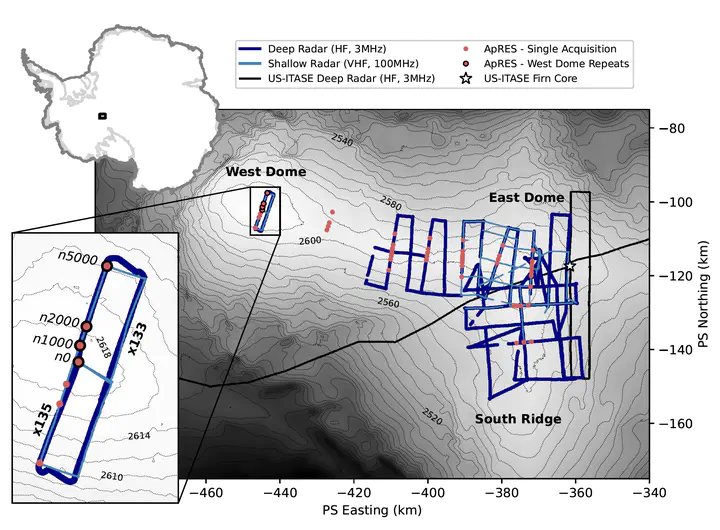A site for deep ice coring at West Hercules Dome: results from ground-based geophysics and modeling

Abstract
Hercules Dome, Antarctica, has long been identified as a prospective deep ice core site due to the undisturbed internal layering, climatic setting, and potential to obtain proxy records from the last interglacial when the West Antarctic Ice Sheet may have collapsed. We performed a geophysical survey using multiple ice-penetrating radar systems to identify potential locations for a deep ice core. The surface topography, as revealed with recent satellite observations, is considerably more complex than previously recognized; the most prominent dome, which we term “West Hercules Dome”, is the most promising site for a deep ice core for the following reasons: (1) conformal radar reflectors (indicating minimal layer disturbance) extend to within tens of meters of the bed, (2) the bed is likely frozen, as evidenced by the shape of the measured vertical velocity profiles beneath the divide and modeling of ice temperature using three remotely-sensed estimates of geothermal flux, and (3) models of layer thinning have 130 ka ice at 50-90 m above the bed with an annual layer thickness of ~1 mm, satisfying the resolution and preservation needed for detailed analysis of the last interglacial period. Future work to refine our understanding of West Hercules Dome is scheduled for the 2022/23 Austral summer.